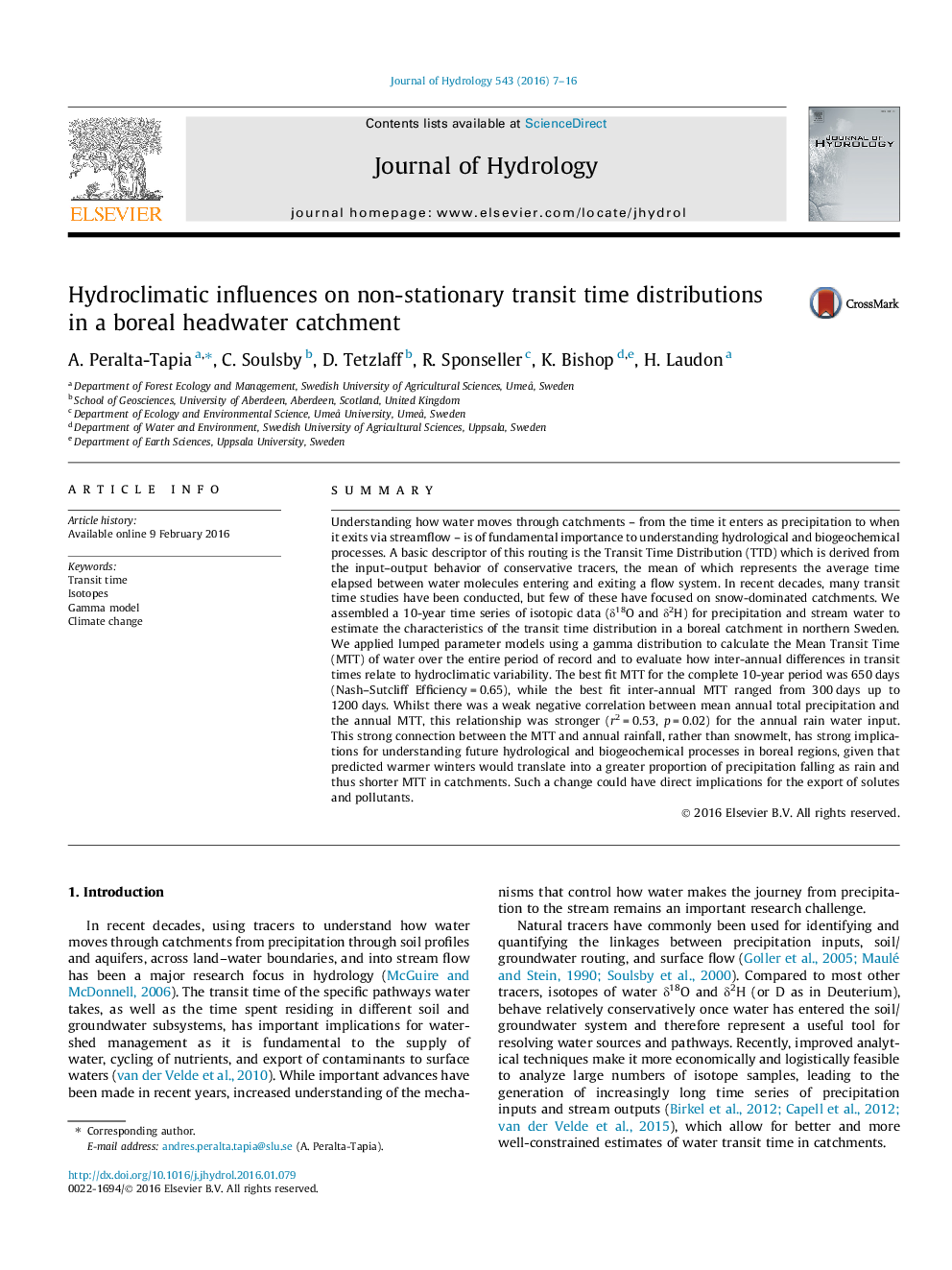| کد مقاله | کد نشریه | سال انتشار | مقاله انگلیسی | نسخه تمام متن |
|---|---|---|---|---|
| 5770944 | 1413307 | 2016 | 10 صفحه PDF | دانلود رایگان |
- Gamma distribution model converged to exponential model during wet years.
- Annual mean transit time was better correlated to snow-free precipitation.
- Predicted future warmer winters in boreal regions may lead to shorter transit times.
SummaryUnderstanding how water moves through catchments - from the time it enters as precipitation to when it exits via streamflow - is of fundamental importance to understanding hydrological and biogeochemical processes. A basic descriptor of this routing is the Transit Time Distribution (TTD) which is derived from the input-output behavior of conservative tracers, the mean of which represents the average time elapsed between water molecules entering and exiting a flow system. In recent decades, many transit time studies have been conducted, but few of these have focused on snow-dominated catchments. We assembled a 10-year time series of isotopic data (δ18O and δ2H) for precipitation and stream water to estimate the characteristics of the transit time distribution in a boreal catchment in northern Sweden. We applied lumped parameter models using a gamma distribution to calculate the Mean Transit Time (MTT) of water over the entire period of record and to evaluate how inter-annual differences in transit times relate to hydroclimatic variability. The best fit MTT for the complete 10-year period was 650 days (Nash-Sutcliff Efficiency = 0.65), while the best fit inter-annual MTT ranged from 300 days up to 1200 days. Whilst there was a weak negative correlation between mean annual total precipitation and the annual MTT, this relationship was stronger (r2 = 0.53, p = 0.02) for the annual rain water input. This strong connection between the MTT and annual rainfall, rather than snowmelt, has strong implications for understanding future hydrological and biogeochemical processes in boreal regions, given that predicted warmer winters would translate into a greater proportion of precipitation falling as rain and thus shorter MTT in catchments. Such a change could have direct implications for the export of solutes and pollutants.
Journal: Journal of Hydrology - Volume 543, Part A, December 2016, Pages 7-16
